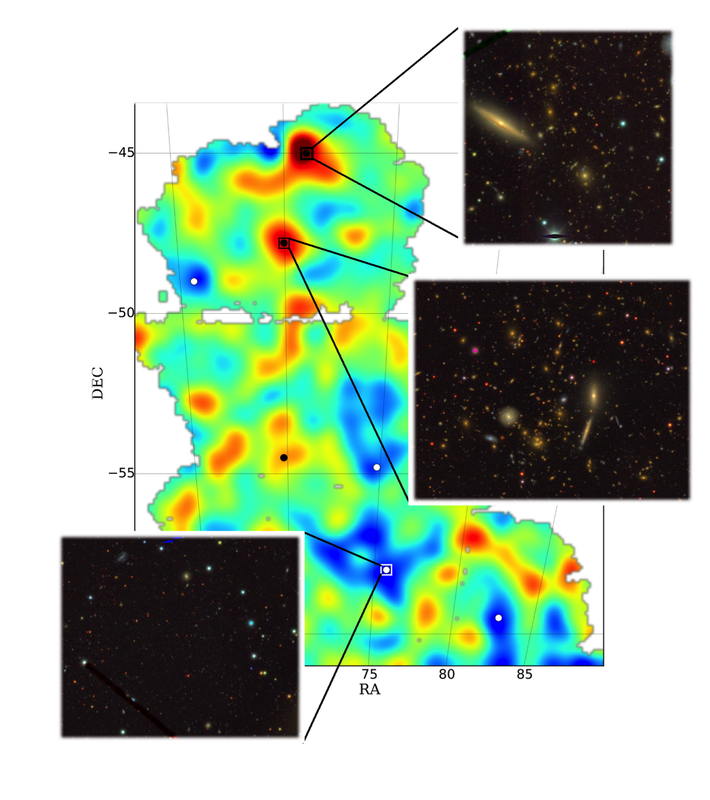|
A new paper led by undergraduate thesis student Benjamin Lehmann and graduate student Yao-Yuan Mao. We present a new method for abundance matching galaxies to dark matter halos, which includes a free parameter that can account for the concentration dependence of the galaxy-halo connection, and thus naturally can account for different levels of assembly bias. We show that this parameter can be constrained with clustering data, and that low redshift clustering measurements from SDSS prefer a moderate amount of concentration dependence --- more than would be indicated by matching galaxy luminosity to the peak halo mass, and less than would be indicated by matching to the peak halo circular velocity. We use new large high-resolution simulation boxes to show that statistical constraints on these models have been limited primarily by sample variance in the limited-size simulations, and not in the data.
See more here: http://arxiv.org/abs/1510.05651 Scientists on the Dark Energy Survey, using one of the world’s most powerful digital cameras, have discovered eight more faint celestial objects hovering near our Milky Way galaxy. Signs indicate that they—like the objects found by the same team earlier this year—are likely dwarf satellite galaxies, the smallest and closest known form of galaxies.
Read more at http://www.symmetrymagazine.org/article/august-2015/dark-energy-survey-finds-more-celestial-neighbors New article from Symmetry Magazine about our trillion particle simulations:
A small team of astrophysicists and computer scientists have created some of the highest-resolution snapshots yet of a cyber version of our own cosmos. Called the Dark Sky Simulations, they’re among a handful of recent simulations that use more than 1 trillion virtual particles as stand-ins for all the dark matter that scientists think our universe contains. They’re also the first trillion-particle simulations to be made publicly available, not only to other astrophysicists and cosmologists to use for their own research, but to everyone. The Dark Sky Simulations can now be accessed through a visualization program in coLaboratory, a newly announced tool created by Google and Project Jupyter that allows multiple people to analyze data at the same time. Read more at http://www.symmetrymagazine.org/article/august-2014/open-access-to-the-universe Major congrats to Marc Williamson and Benjamin Lehmann on graduating from Stanford!
Ben and Mark both worked with my group for the past few years and both completed undergraduate thesis this spring. Marc worked with me, Yao-Yuan Mao, & Phil Marshall to constrain the mass of the Milky Way using the positions and motions of its neighbor galaxies (M31, M33, and the LMC). Marc will be taking the next year to travel and do research (including with my collaborators at ETH Zurich) before applying to graduate school at New York University. Ben worked with me, Yao-Yuan Mao, & Matt Becker on a new model for the galaxy-halo connection which extends previous techniques for abundance matching to include concentration dependence. Ben will stay at Stanford this year to do a co-terminal Masters in Statistics, and will start graduate school at UCSC in Fall 2016. Best of luck to both of them in their new adventures!
|
TidbitsNews, papers, and tidbits from Risa and her Galaxy Formation and Cosmology Group at KIPAC / Stanford University. Archives
May 2021
Categories |

 RSS Feed
RSS Feed